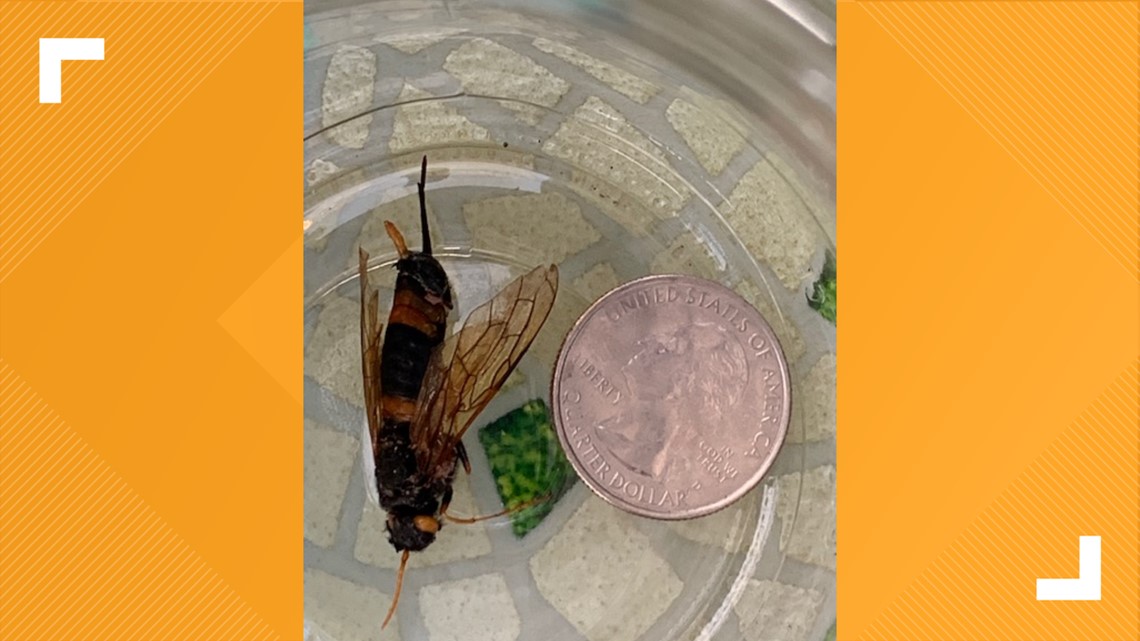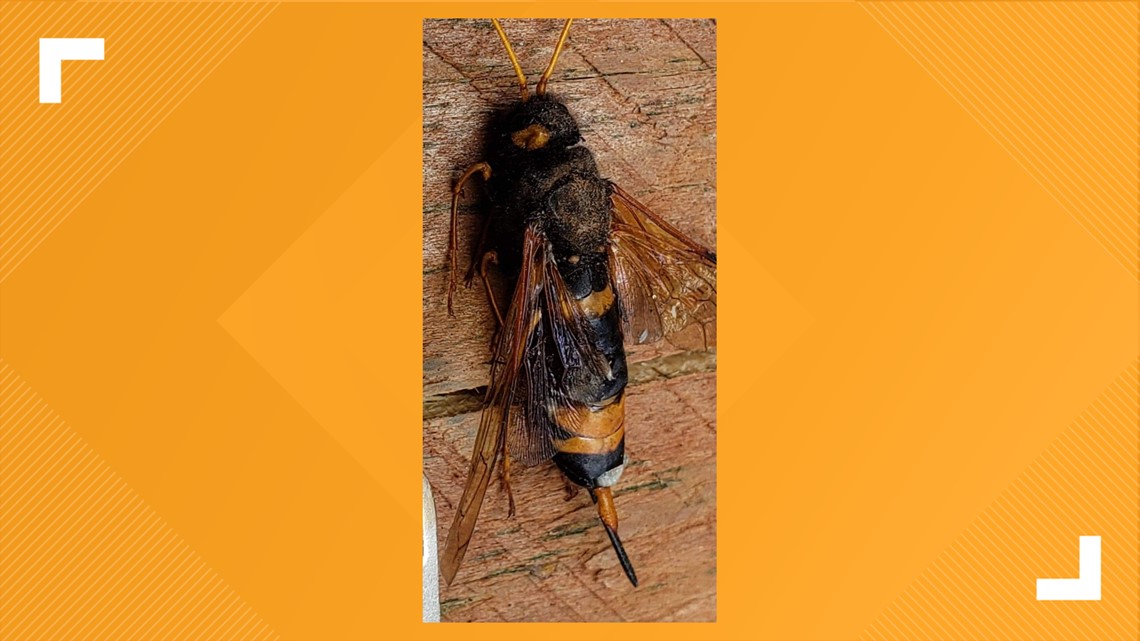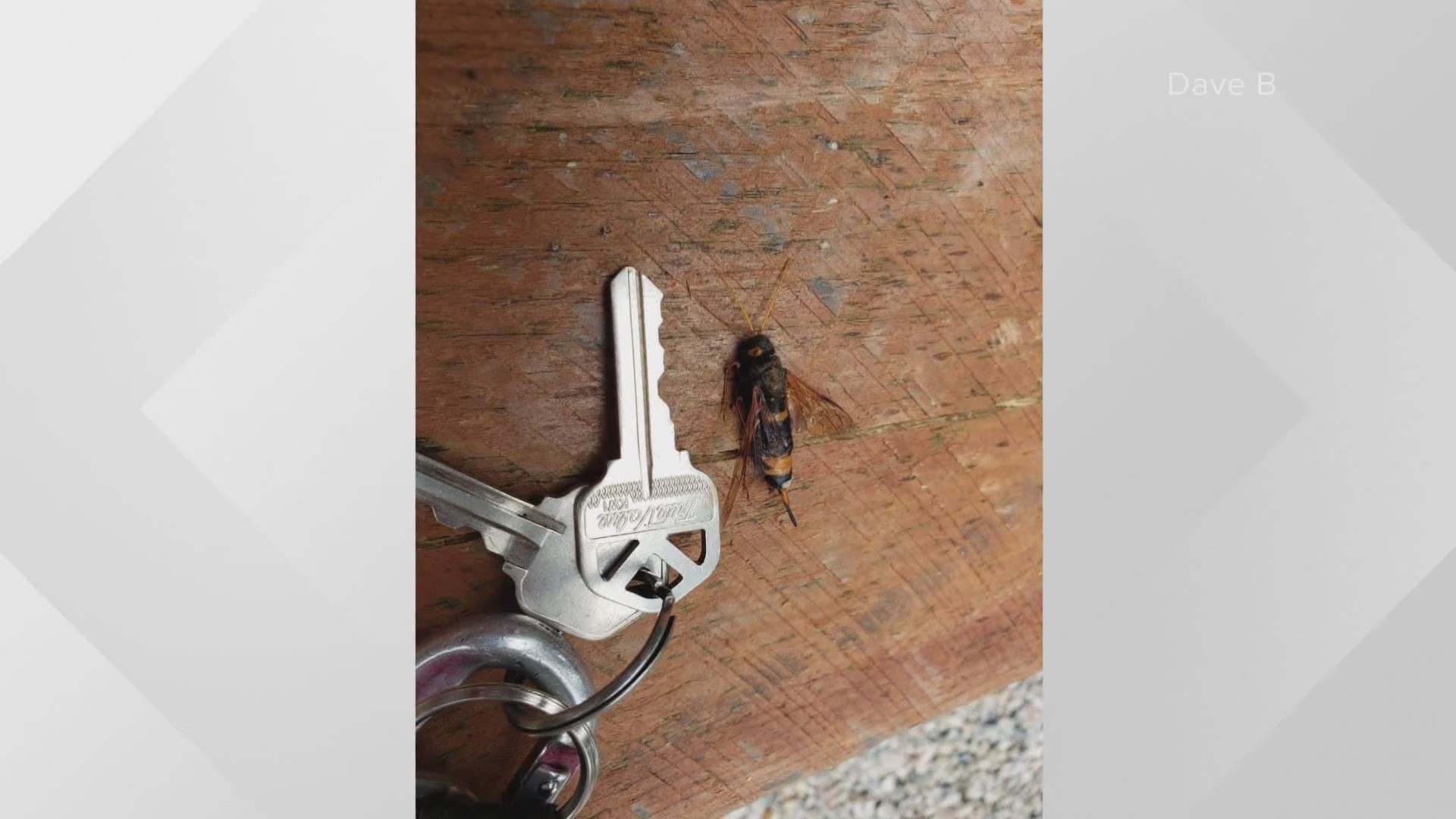DENVER — When you see an email with the subject line “murder hornet," you pay attention.
And in recent weeks, multiple 9NEWS viewers have emailed photos of a large, wasp-like creature wondering if they’re the murder hornets that captured headlines back in May … giving us yet another thing to worry about amid a global pandemic (you can also email your creepy bug photos to yourtake@9news.com, even though we’d prefer cute puppies).
But seriously look at this thing. This isn’t a bug you’d like to casually crawl onto your shoulder in the dark.


Actually, these are the things of nightmares …


Luckily, Coloradans have a pretty cool resource at our disposal: the Colorado State University Extension, which literally has a form you can fill out and a spot to upload photos in order to have an expert tell you if the terrifying creature you’ve seen is harmless or actually worth burning your house down for.
Whitney Cranshaw, a professor at CSU, was able to quickly shoot down the notion that murder hornets have reached Colorado (Washington State is currently trapping the insects, which are also known as Asian giant hornets).
He said the insects seen in the viewer photos are known as horntails.
“They develop as a wood borer in newly dead/nearly dead trees, this one in conifers,” Cranshaw wrote in an email to 9NEWS. “They are harmless, they cannot sting.”


That’s pretty good news, because the stingers in the photos 9NEWS received look fairly intense.
And then, just for fun, Cranshaw attached the below YouTube video he created about scary wasps, if you’re into that type of thing.
Back to horntails.
According to CSU's website, the horntail is scientifically known as the pigeon tremex. These insects mainly attack trees that are almost dead (or mostly dead, if you're a "Princess Bride" fan).
Horntail adults are active from June to October ... so if you want to see one of these creepy crawlers in the flesh, you've still got time.
SUGGESTED VIDEOS: Science is Cool

